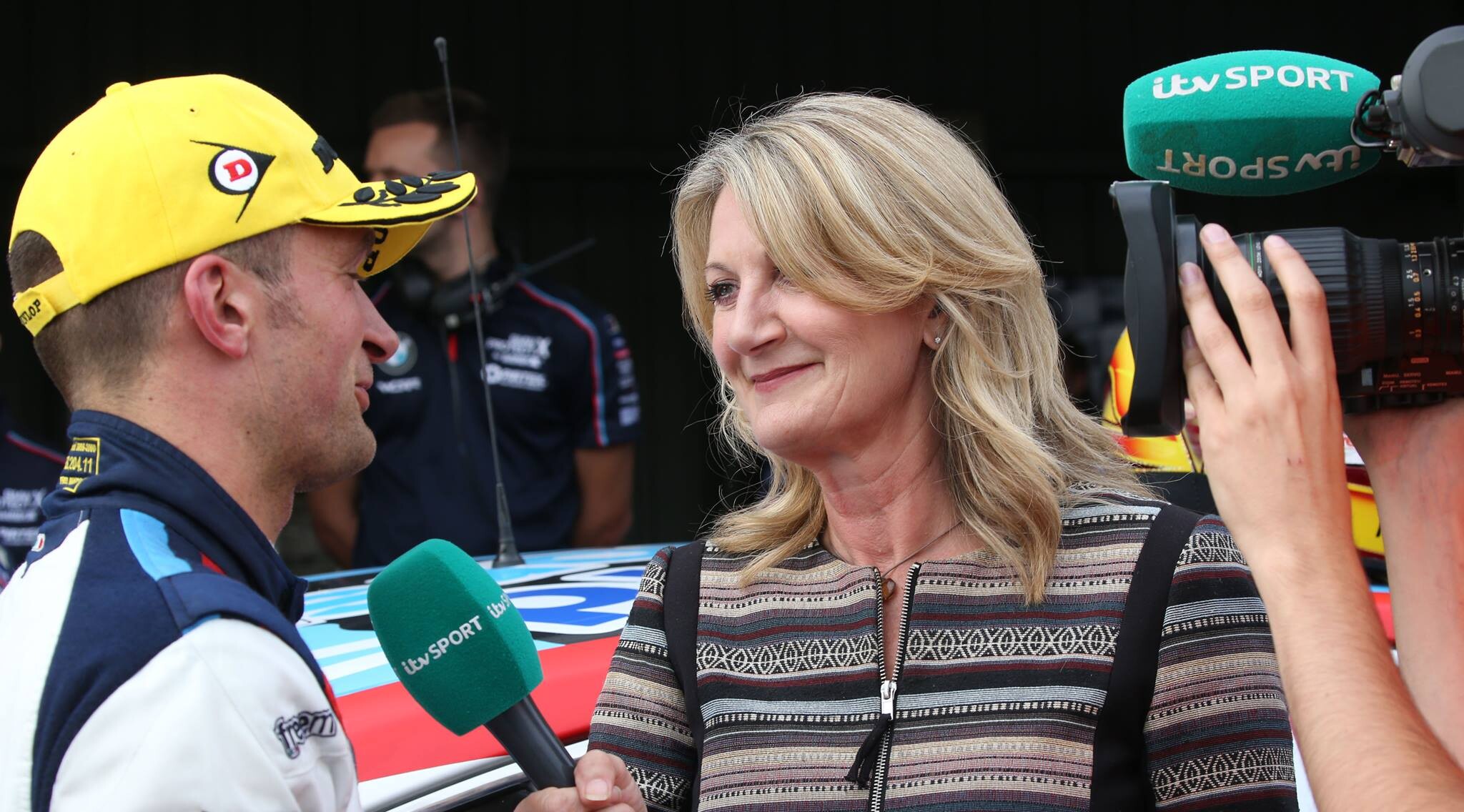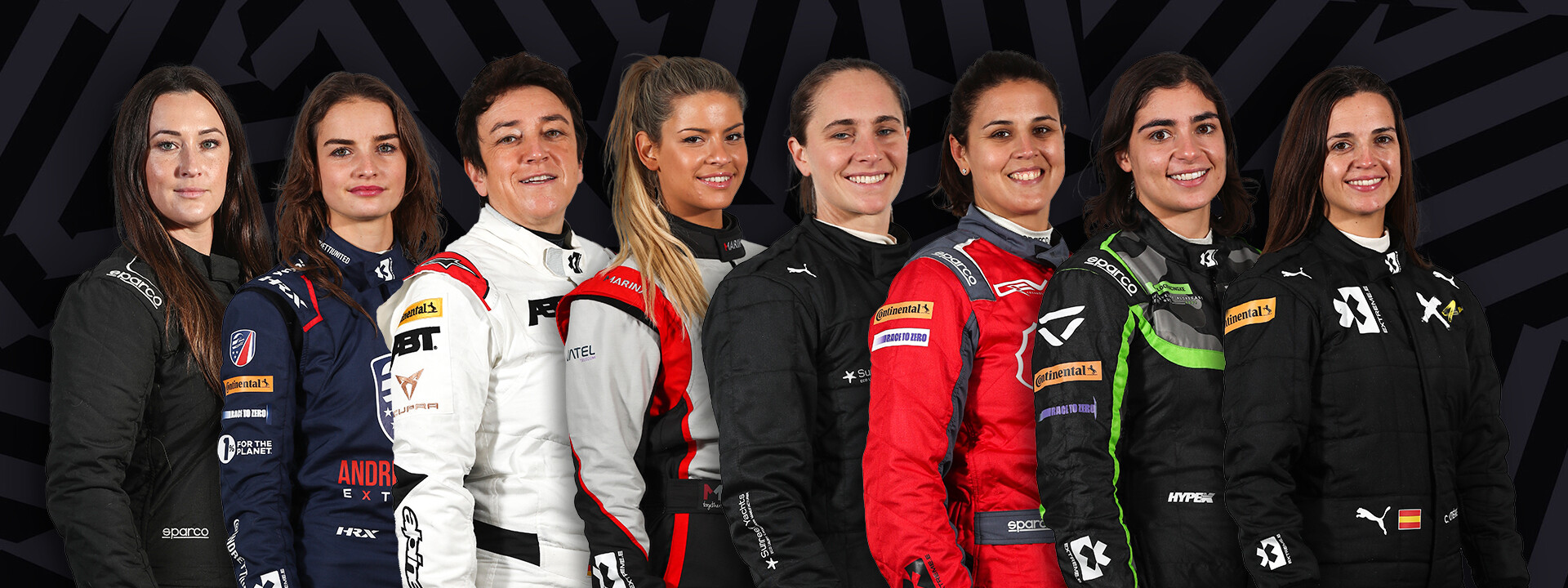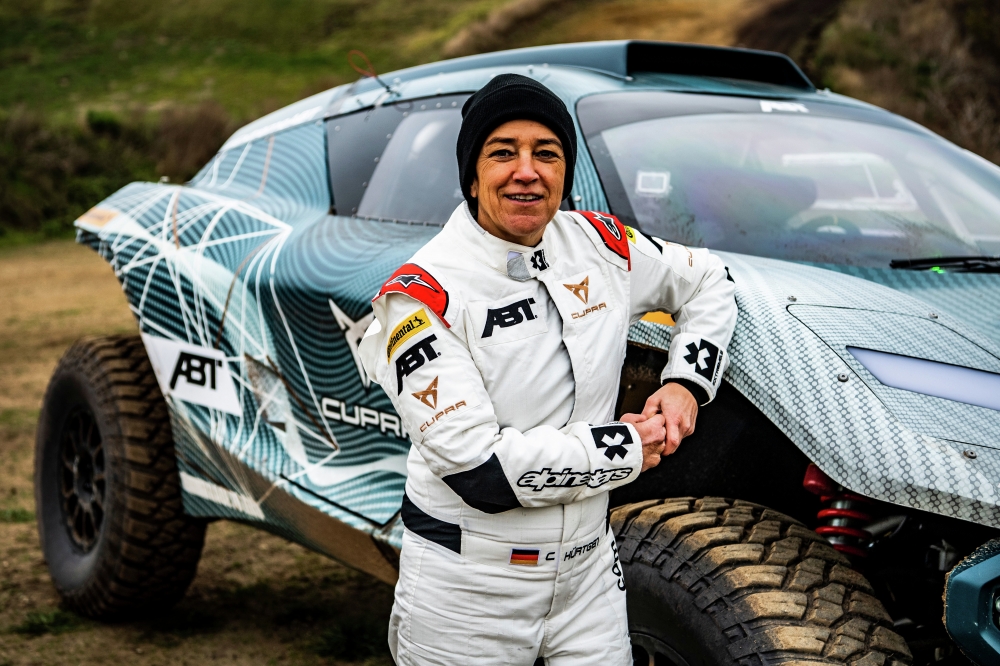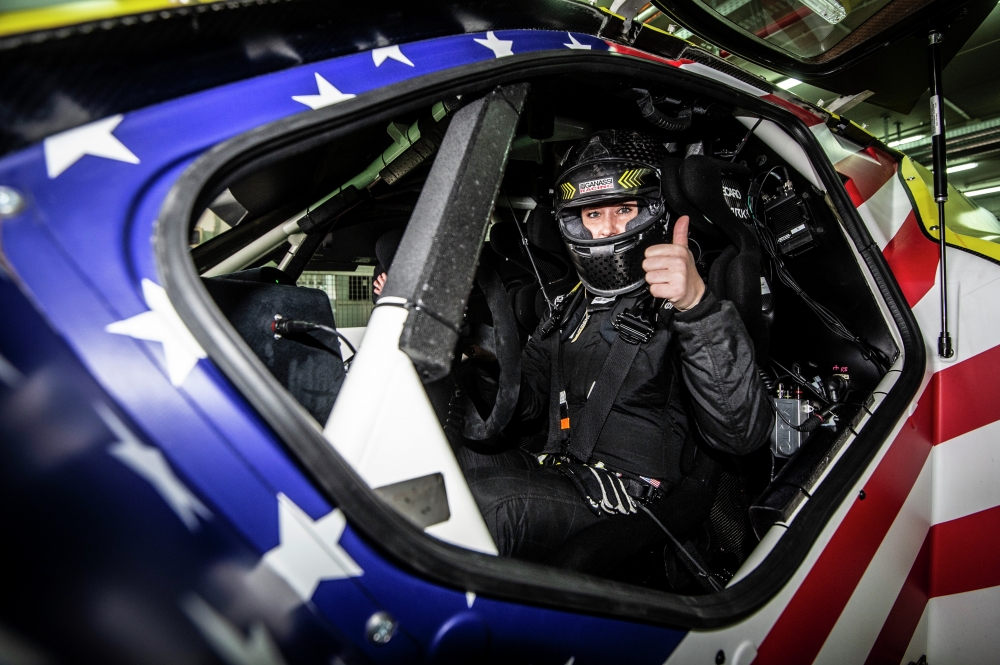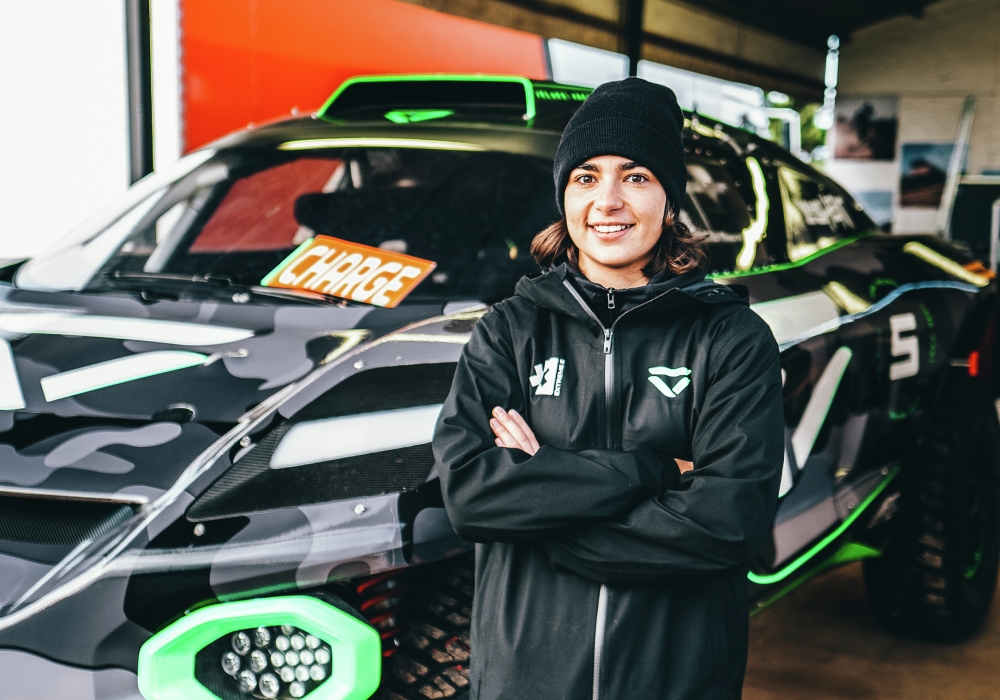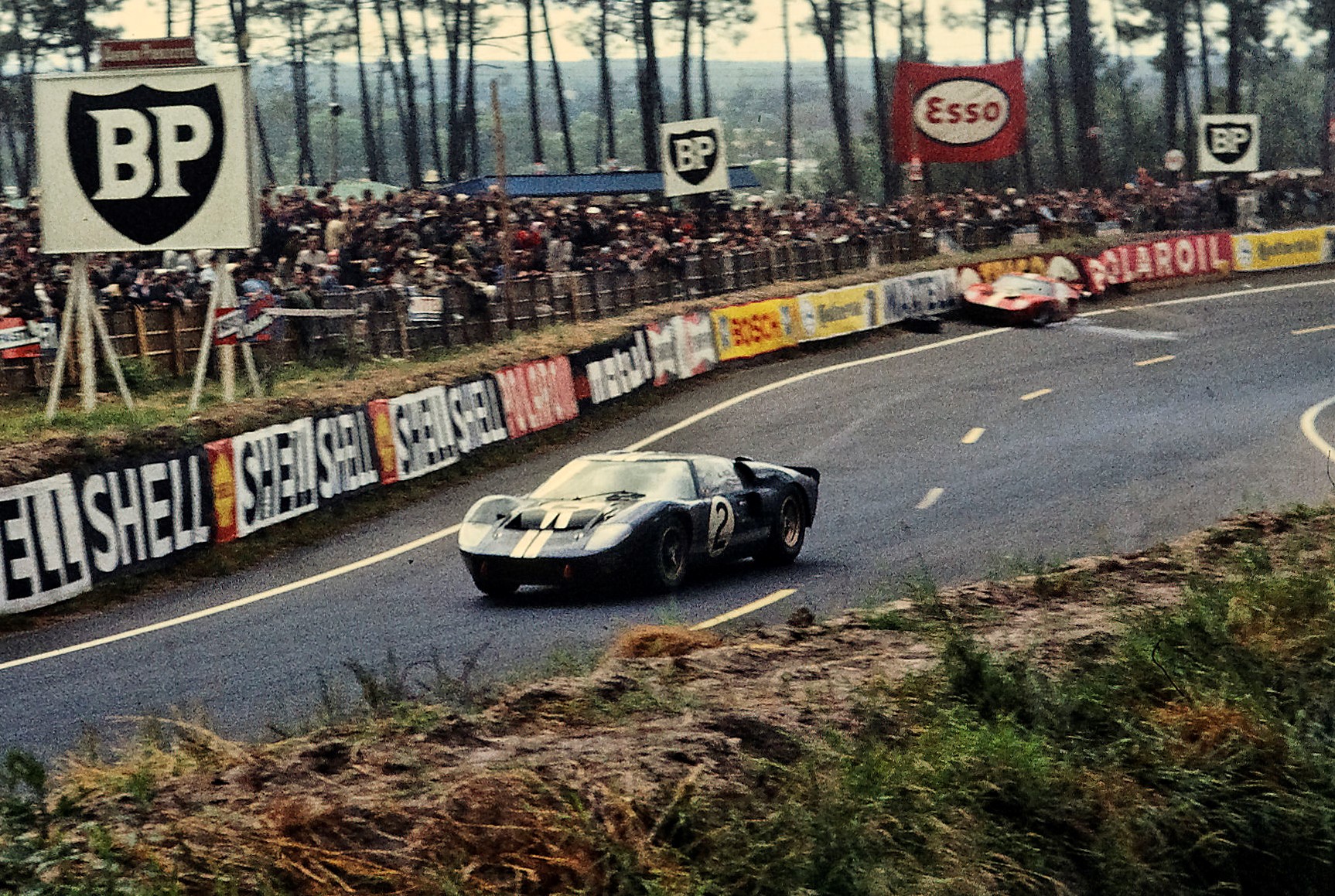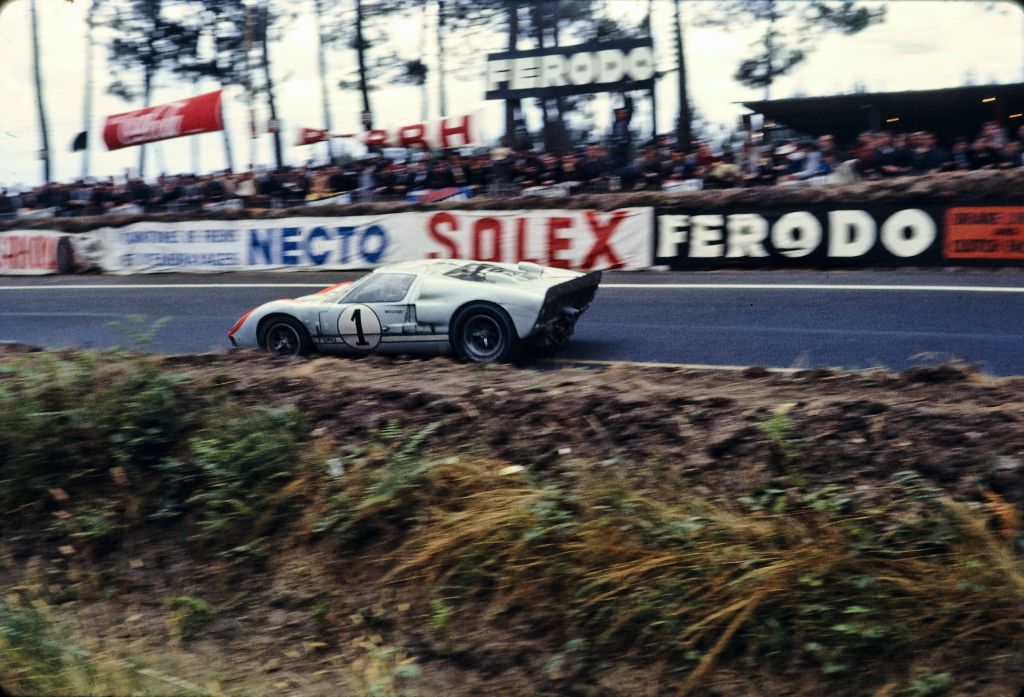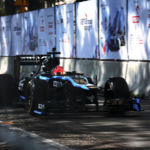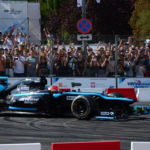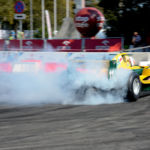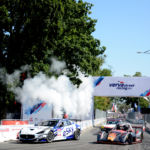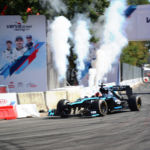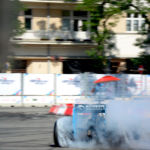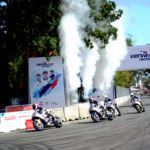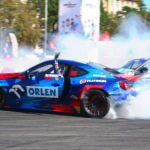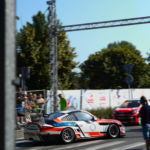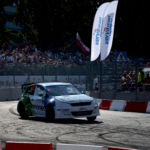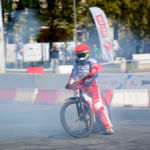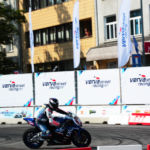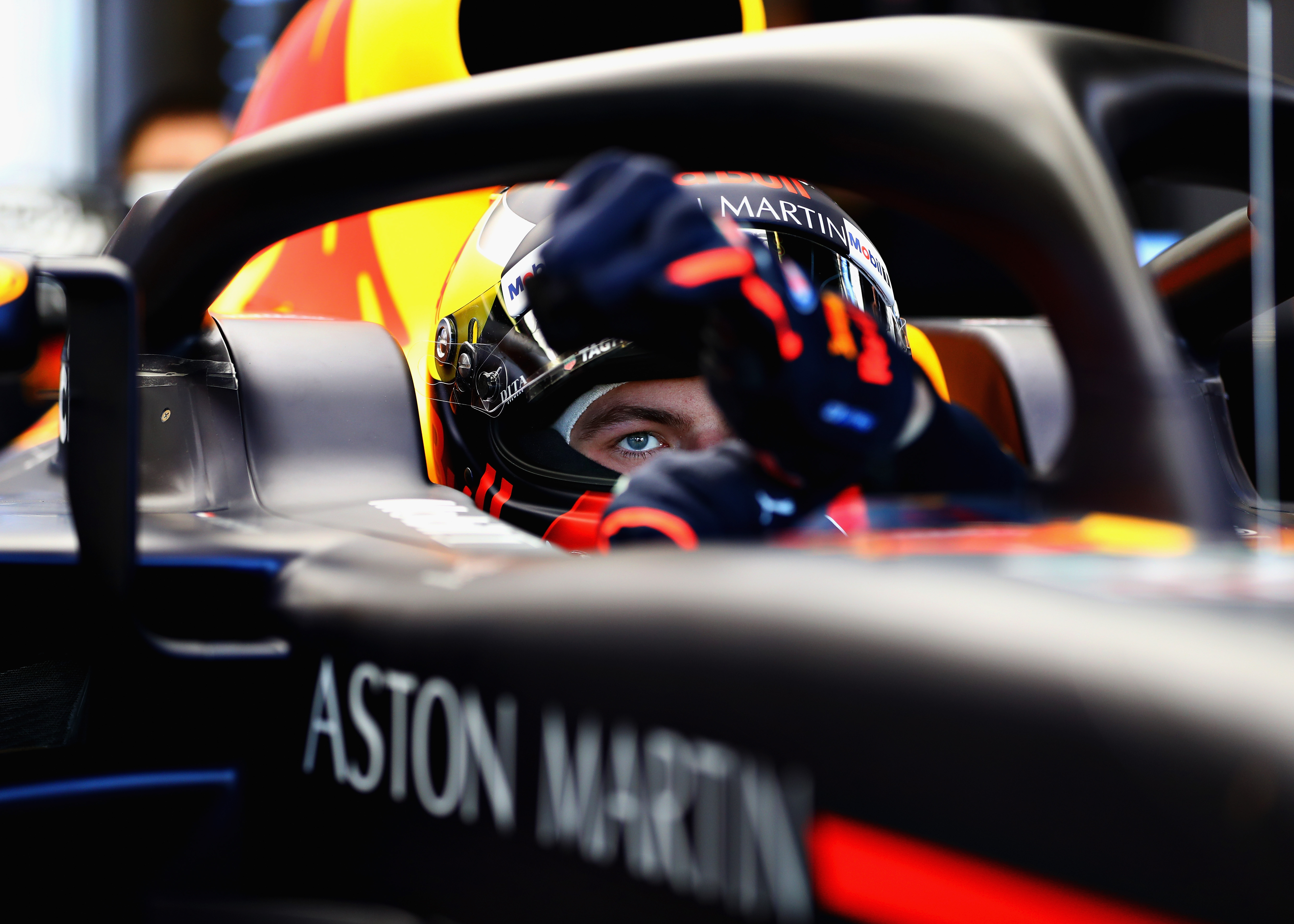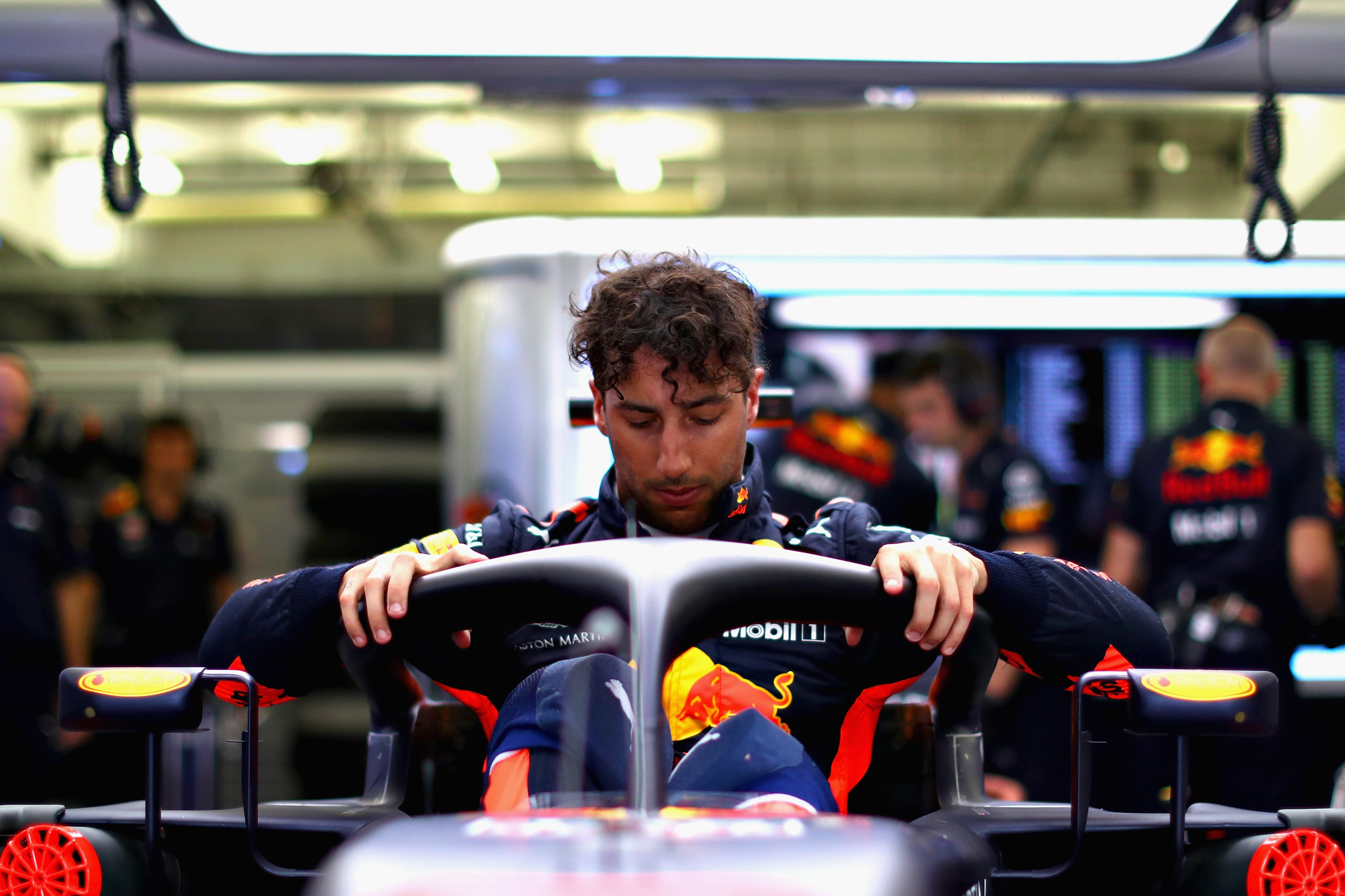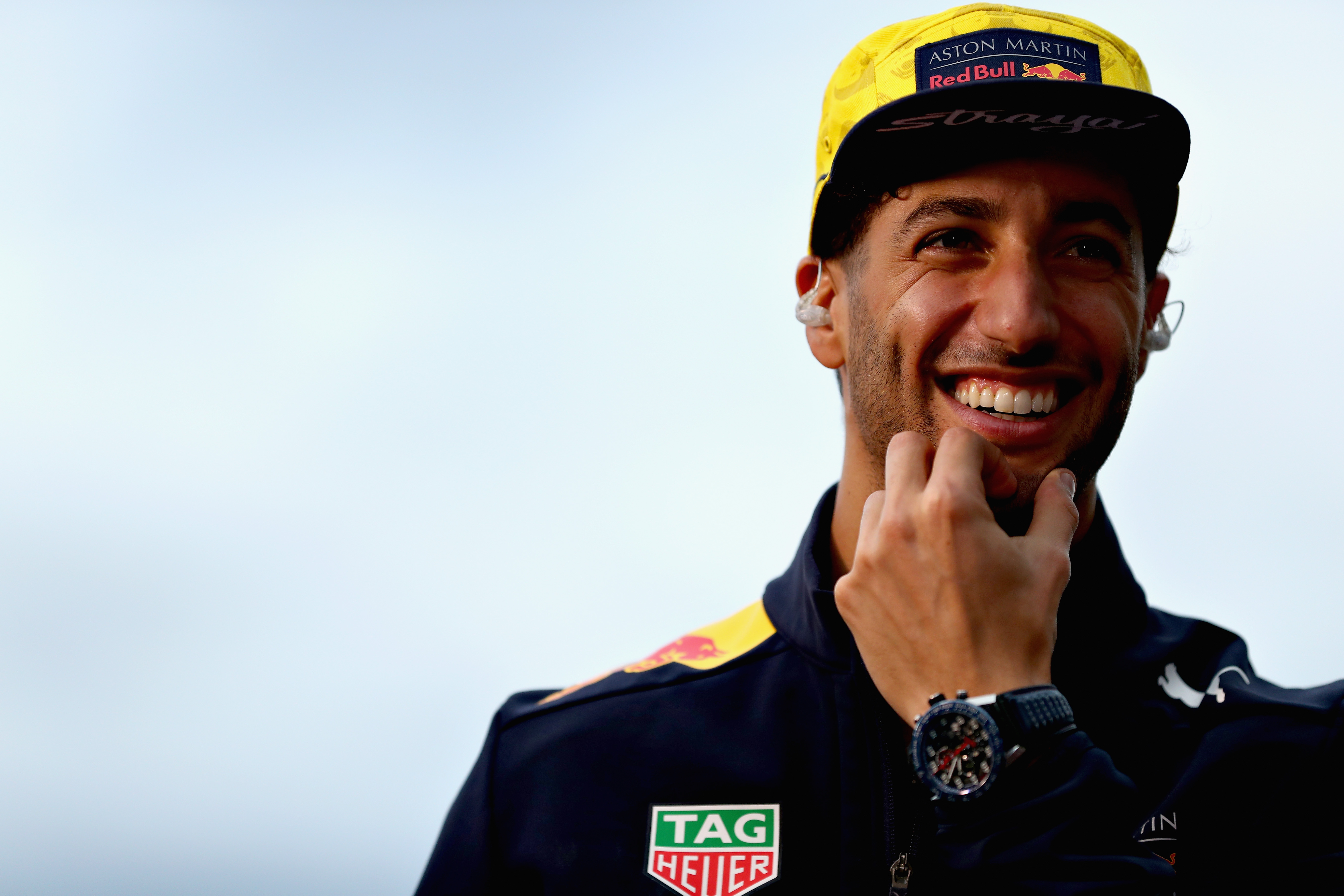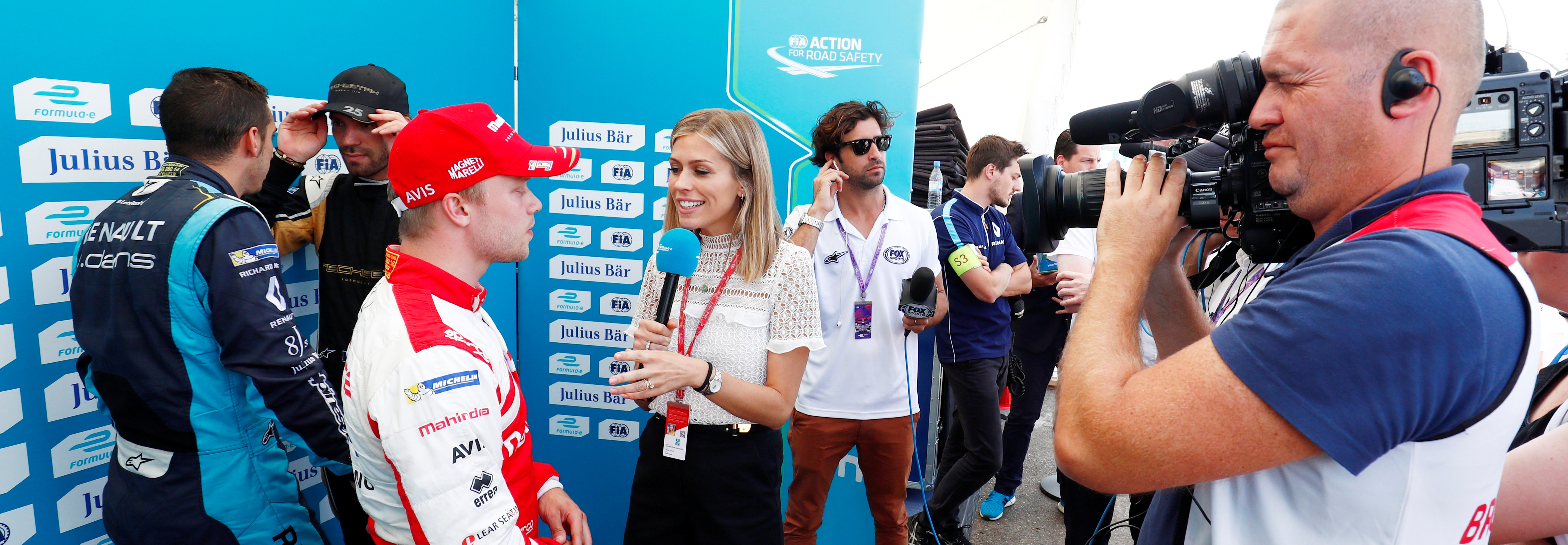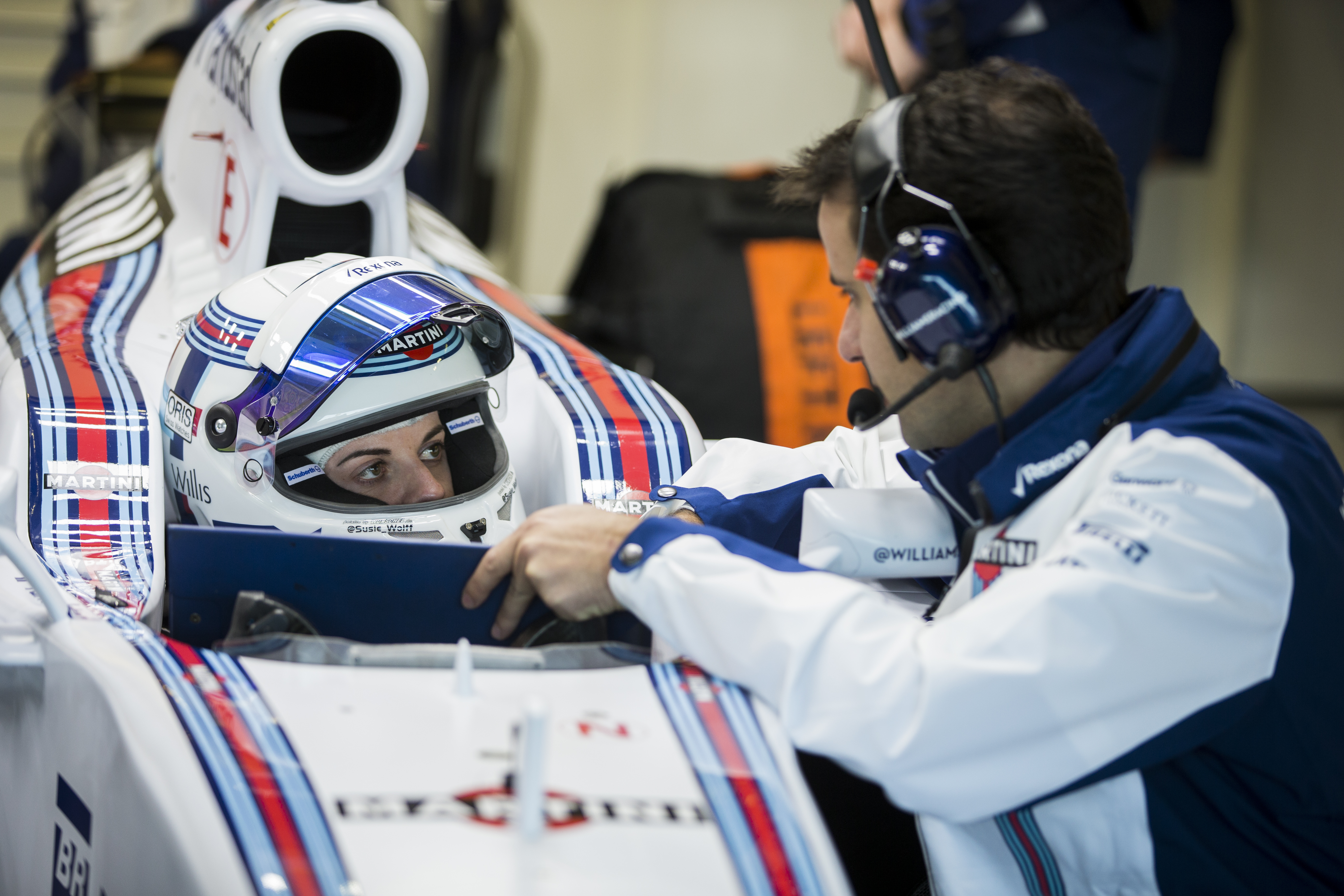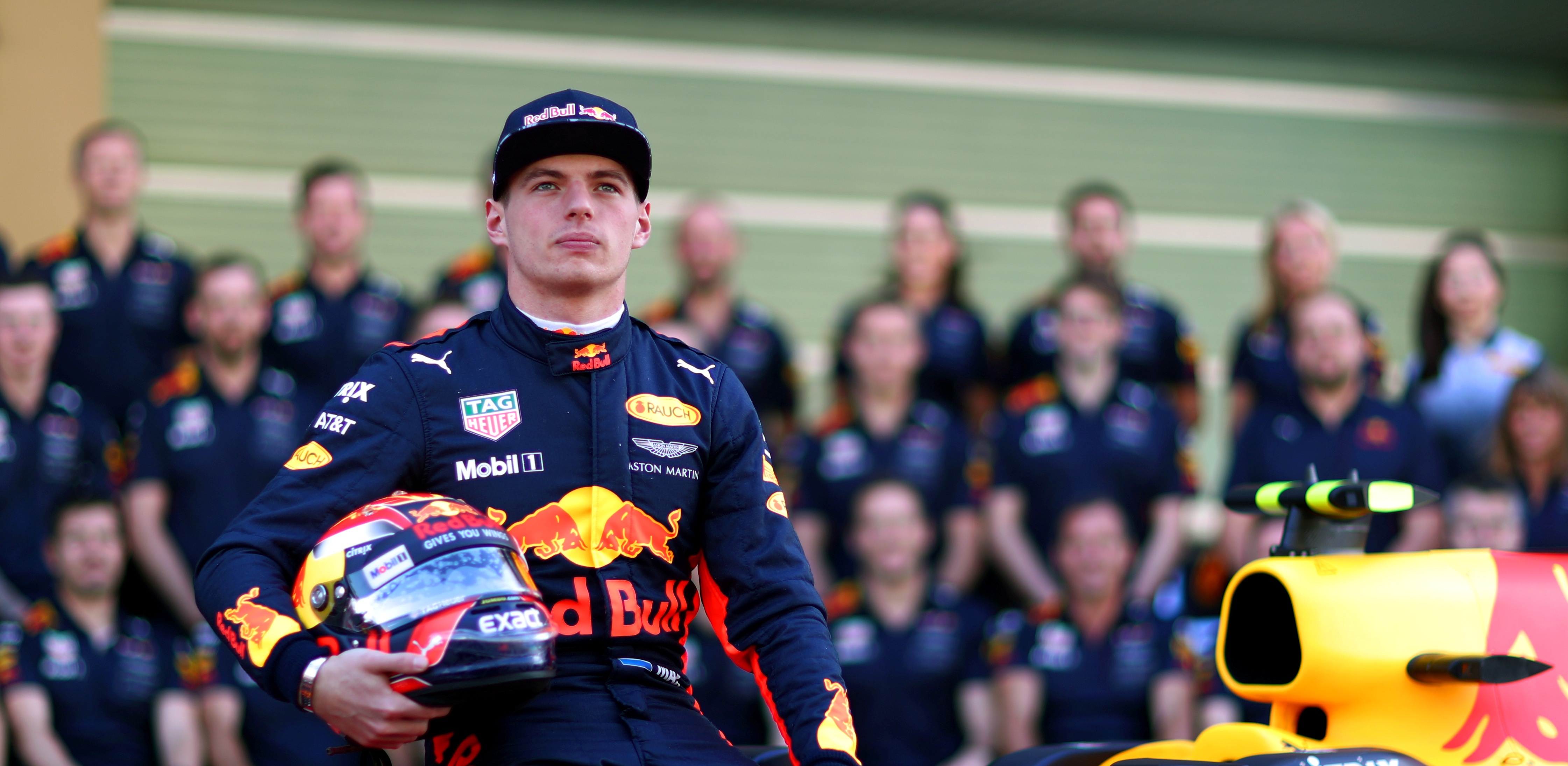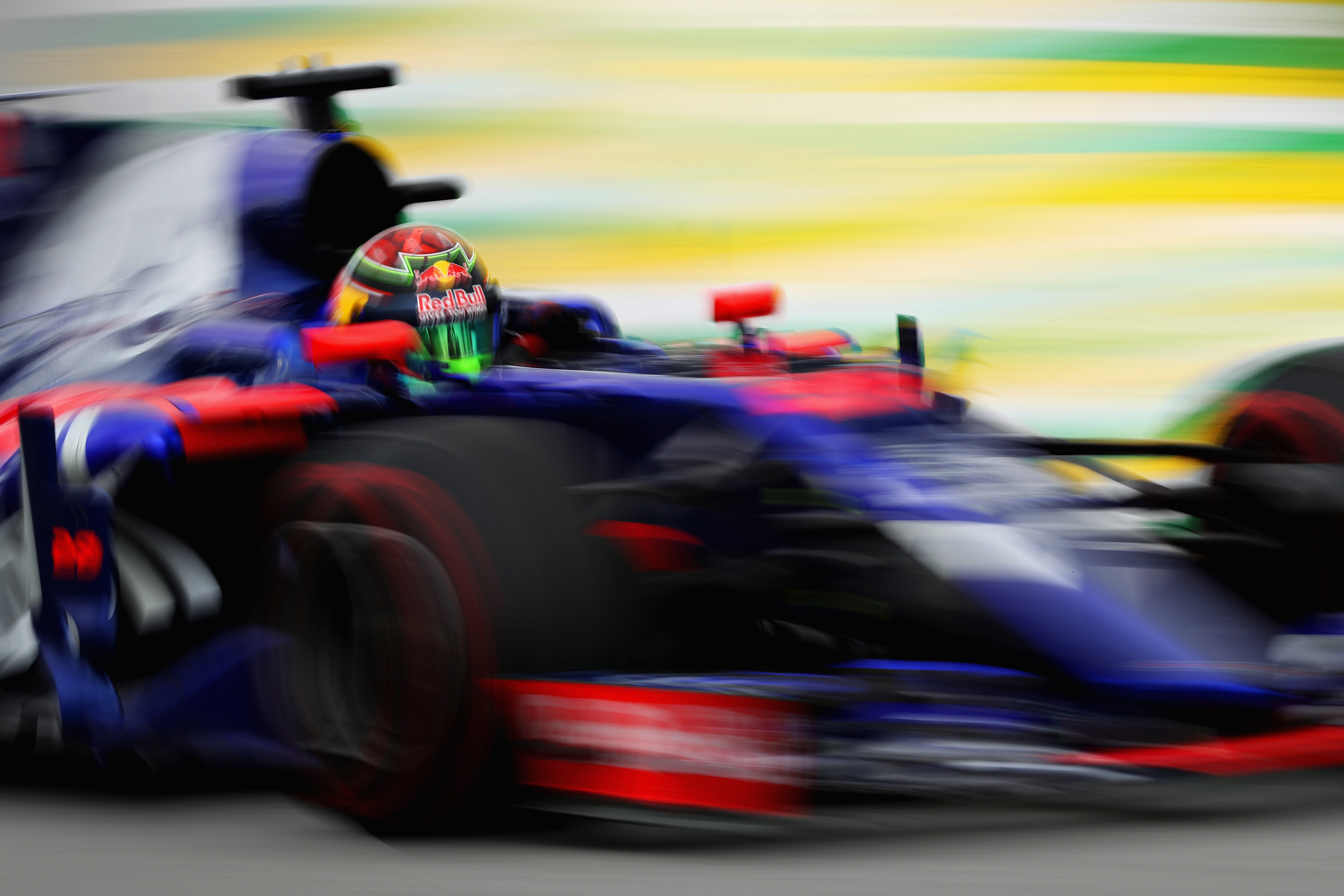Louise Goodman has had a long career in motorsport, from starting out as a Press Officer at Jordan Grand Prix to becoming a familiar face to Formula 1 fans in the UK as a pitlane reporter for ITV. She now presents ITV’s BTCC coverage and has her own media training company – Goodman Media.
In our interview, Louise shares her insights into how the sport has changed over the years and discusses some of her more unique experiences, including becoming the first wo man to take part in a Formula 1 pit stop and being a passenger in a crash between Fernando Alonso and Nigel Mansell!
Alison Finlay: You’ve had a long career in motorsports – generally regarded as a very male-dominated environment – what would you rank as some of your greatest achievements?
Louise Goodman: I think having a long career in motorsport is probably up there on the list! I was lucky to fall into the sport. It wasn’t as if I set out to work in motorsport, or in broadcasting, which is what I’ve ended up doing. It’s a competitive business, and to have carried on working in it in various different guises; various different roles, I think it’s something to be… well, I applaud it anyway, even if nobody else does! It makes me happy, put it that way.
Wyświetl ten post na Instagramie.
AF: What are some of your thoughts on how things have changed over the years in terms of participation of women and involvement of women in the sport?
LG: When I first walked into a Formula 1 paddock, back in the very late 1980s, you could probably count on not more than two hands the amount of women that were actually working in the paddock. It does have to be said that the number of people working in the paddock full stop was a lot smaller. Nowadays the teams have massive great big motorhomes that probably take 20-30 people to set them up. Back when I first started, it was two people, very often a husband-and-wife team, who drove the motorhome from A to B, set it all up, did the cooking and did a bit of everything.
When I first started out in Formula 1, some of the teams didn’t have a press officer. There was no facility for looking after the media, and a lot less media as well. And in marketing, there would be maybe two people in the commercial department, and that would be it. So marketing, media, those are areas where we’ve traditionally seen more women. I think more recently what’s been really good is the increase in numbers of women working on the technical side as well.
I think there is still work to be done to open people’s eyes to the fact that there are so many roles in the various different areas that motorsport encompasses, obviously the engineering side being one of those key areas. [Teams are] competitive across every level: they want the best engineers; they want the best candidates. They don’t really care whether they’re male or female, but the pool from which they are drawing has a lot more men in it, so inevitably, there’s going to be a lot more men coming through.
It has to start at the bottom. It starts in school, it starts in education, with encouraging a broader spectrum of people from different genders and different ethnicities to go into the subjects that will ultimately lead towards people having careers in motorsport.
AF: You were the first woman to take part in an F1 pitstop. Can you talk about how that came about and what that experience was like for you?
LG: When I was part of the ITV Formula 1 presentation team, we were always looking for different ideas for different features. I was standing in the pit lane at one of the Grands Prix watching – I think it was Honda at the time. They were doing their pitstop practice and Alastair Gibson, their chief mechanic said ‘you should have a go at this!’ and that sowed the seed for the idea.
I trained with the team. I had to take part, understandably, in a lot of pit stop practice to make sure that I was up to the job. The plan was that we would film two pieces that would go out as part of our coverage at the British Grand Prix. The week before the Grand Prix, I took a phone call from Gil de Ferran, who was the sporting director of the team at the time, who said ‘I’m really sorry Louise, but we’ve had a meeting and you’re not going to be able to do the pit stop’, which I was immensely frustrated about. So [we] were left with a hole in our feature material for the British Grand Prix.
I put in a phone call to Andy Stevenson who was at Midland at the time. We had known each other for a long time I said ‘I’ve got this problem, I’ve trained to do this’ and he said ‘fine, no problem’. And I said ‘well, do you need to check?’ and he said ‘no, there’s no point telling the engineers about it, is there? they always get too uptight about this kind of thing’. I obviously then had to go and do some pit stop practice with their team, which scared the bejesus out of me, because I then discovered my job was rear left wheel off, and there was a very particular movement that you had to do on the Honda car and it was slightly different on the Midland.
I was incredibly nervous about it.. I really was going to have to muck it up in a monumental style if I was going to have an impact on their pitstop. But my heart was still in my mouth when it happened, and I felt like I’d just won the Grand Prix when it all went successfully!
Ironically, Jenson Button’s car with the Honda team never made it to his first pit stop, so had I stuck with the original team, it would never have happened! So it was big thanks to Andy, who I discovered afterwards had literally told his engineers ten minutes before the start of the race that I was going to be on the crew doing the pit stops.
Read 2nd part here:bit.ly/3c9pN41
